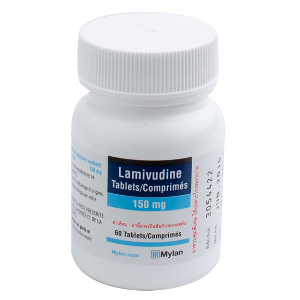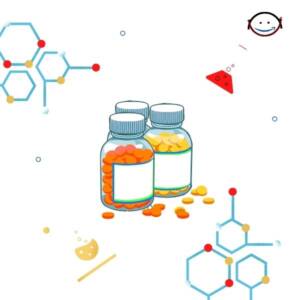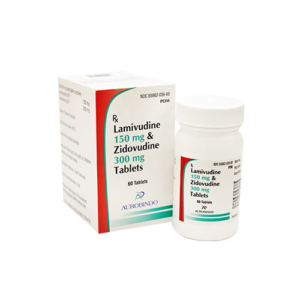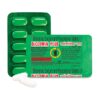-
DICLOWIN PLUS TAB 10`S ₦453.25 QTY: 1
-
Solgar Ultimate Calm Daily Support 30 Capsules ₦45,822.82 QTY: 1
-
Uniflu Coughstop Syrup - 100ml ₦18,600.00 QTY: 1
-
Stardea Fluistar Oral Solution 200ml ₦27,968.00 QTY: 1
Customer matched zone "Lagos Delivery Options"
Sort by:
196641–196656 of 385956 Results
-
-
-
-
-
Manufactured by: Mylan Lamivudine, Nevirapine, and Zidovudine Tablets is indicated alone as a complete regimen or in combination with other antiretrovirals for the treatment of human immunodeficiency virus type 1 (HIV-1) infection in adults and pediatric patients weighing at least 35 kg.Sku: 1712362204-262
Lamivudine(150mg) Nevirapine(200mg) Zidovudine(300mg) Tablets
₦100.00 -
Lamivudine, Nevirapine, and Zidovudine Tablets is indicated alone as a complete regimen or in combination with other antiretrovirals for the treatment of human immunodeficiency virus type 1 (HIV-1) infection in adults and pediatric patients weighing at least 35 kg.Sku: 1712362196-261
Lamivudine/Nevirapine/Zidovudine (150/200/300)mg
₦4,550.00 -
Lamnet Tablets SpecificationRequires Prescription (YES/NO)YesGenericsLamotrigineUsed ForEpilepsyHow it worksIt treats epilepsy by blocking the signals in the brain that trigger epileptic seizures (fits).Lamnet Tablets Usage And SafetyDosageLamotrigineSide EffectsHeadache , skin rash. aggression or irritability , feeling sleepy or drowsy , feeling dizzy , shaking or tremors , difficulty in sleeping (insomnia), feeling agitated , diarrhoea , dry mouth, feeling sick (nausea) or being sick (vomiting) , feeling tired , pain in your back or joints, or elsewhere , clumsiness and lack of co-ordination (ataxia) , double vision or blurred vision , hair loss or thinning (alopecia).Drug InteractionsOxcarbazepine, felbamate, gabapentin, levetiracetam, pregabalin, topiramate or zonisamide , lithium, olanzapine or aripiprazole , bupropion , valproate , carbamazepine , phenytoin, primidone or phenobarbitone , risperidone , rifampicin .IndicationLamotrigine belongs to a group of medicines called anti-epileptics. It is used to treat two conditions - Epilepsy and bipolar disorder.When not to UseDo not take Lamotrigine: If you are allergic (hypersensitive) to lamotrigine or any of the other ingredients of this medicine . Lamnet Tablets PrecautionsPrecautionTalk to your doctor or pharmacist before taking Lamotrigine : If you have any kidney problems or If you have ever developed a rash after taking lamotrigine or other medicines for bipolar disorder or epilepsy.Lamnet Tablets WarningsWarning 1Medicines to treat depression and other mental health problems increase the risk of suicidal thoughts and behaviour in children and adolescents aged under 18 years.Warning 2Lamotrigine can cause dizziness and double vision.Warning 3It contain small amounts of a sugar called lactose. If you have an intolerance to lactose or any other sugars , Tell your doctor, and don?t take Lamotrigine.Lamnet Tablets Additional InformationPregnancy categoryAlways consult your physician before using any medicine.Storage (YES/NO)Store this medicine at room temperature, away from direct light and heat.Sku: 1716680602-2034
Lamnet Tablets 25Mg (1 Strip = 10 Tablets)
₦143.00 -
SaleLamogin 25 mgLamogin 25 mg is indicated for:Epilepsy-combination therapy in patients aged 2 years and older: partial-onset seizures primary generalized tonic-clonic seizures generalized seizures of Lennox-Gastaut syndrome Epilepsy-monotherapy in patients aged 16 years and older.Adults with Bipolar Disorder.Theropeutic ClassPrimary anti-epileptic drugsPharmacologyLamogin 25 mg controls epileptic seizures by inhibiting voltage-sensitive sodium channels, thereby stabilizes neuronal membranes and consequently inhibits presynaptic excitatory neurotransmitter (e.g., glutamate and aspartate) release.Dosage & Administration of Lamogin 25 mgMonotherapy of seizures (adult and child over 16 years): Initially 25 mg once daily for 14 days, then 50 mg once daily for further 14 days, then increased by maximum 50 mg/day every 7-14 days; usual maintenance dose 225-375 mg/day in 1-2 divided doses.Adjunctive therapy of seizures with Valproate: Adult and child over 12 years: Initially 25 mg on alternate days for 14 days, then 25 mg once daily for further 14 days, thereafter increased by maximum 25-50 mg/day every 7-14 days; usual maintenance, 100-200 mg/day in 1-2 divided doses. Child 2-12 years: Initially 150 mcg/kg/day in 1-2 divided doses for 14 days (those weighing under 13 kg may receive 2 mg on alternate days for first 14 days), then 300 mcg/kg/day in 1-2 divided doses for further 14 days, thereafter increased by maximum 300 mcg/kg/day every 7-14 days; usual maintenance 1-3 mg/kg/day in 1-2 divided doses. Adjunctive therapy of seizures (with enzyme inducing drugs e.g., Carbamazepine, Phenytoin, Phenobarbital, or Primidone) without Valproate: Adult and child over 12 years: Initially 50 mg once daily for 14 days, then 50 mg twice daily for further 14 days, thereafter increased by maximum 100 mg/day in every 7-14 days; usual maintenance 300-500 mg daily in 2 divided doses. Child 2-12 years: Initially 600 mcg/kg/day in 2 divided doses for 14 days, then 1.2 mg/kg/day in 2 divided doses for further 14 days, thereafter increased by maximum 1.2 mg/kg/day in every 7-14 days; usual maintenance 5-15 mg/kg/day in 2 divided doses (maximum 400 mg/day in 2 divided doses). Monotherapy therapy of bipolar disorder (without enzyme inducing Drugs) without Valproate: Adult over 18 years: Initially 25 mg once daily for 14 days, then 50 mg once daily for further 14 days, then 100 mg once daily for further 7 days; usual maintenance dose 200 mg once daily; maximum 200 mg daily. Adjunctive therapy of bipolar disorder with valproate: Adult over 18 years: Initially 25 mg on alternate days for 14 days, then 25 mg once daily for further 14 days, then 50 mg once daily for further 7 days; usual maintenance dose 100 mg daily; maximum 100 mg daily. Adjunctive therapy of bipolar disorder (with enzyme inducing drugs with enzyme inducing drugs e.g., Carbamazepine, Phenytoin, Phenobarbital, or Primidone) without Valproate: Adult over 18 years: Initially 50 mg once daily for 14 days, then 50 mg twice daily for further 14 days, then 100 mg twice daily for further 7 days, then 150 mg twice daily for further 7 days; usual maintenance 200 mg twice daily Dosage of Lamogin 25 mgEpilepsy-Table-1: Escalation Regimen for Lamogin 25 mg in Patients Older than 12 Years with Epilepsy Weeks 1 & 2: In patients not taking Carbamazepine, Phenytoin, Phenobarbital, Primidone or Valproate: 25 mg every day In patients taking Valproate: 25 mg every other day In patients taking Carbamazepine, Phenytoin, Phenobarbital or Primidone and not taking Valproate: 50 mg/day Weeks 3 & 4: In patients not taking Carbamazepine, Phenytoin, Phenobarbital, Primidone or Valproate: 50 mg/day In patients taking Valproate: 25 mg every day In patients taking Carbamazepine, Phenytoin, Phenobarbital or Primidone and not taking Valproate: 100 mg/day (in 2 divided doses) Week 5 onward to maintenance: In patients not taking Carbamazepine, Phenytoin, Phenobarbital, Primidone or Valproate: Increase by 50 mg/day every 1 to 2 weeks In patients taking Valproate: Increase by 25 to 50 mg/day every 1 to 2 weeks In patients taking Carbamazepine, Phenytoin, Phenobarbital or Primidone and not taking Valproate: Increase by 100 mg/day every 1 to 2 weeks Usual maintenance dose: In patients not taking Carbamazepine, Phenytoin, Phenobarbital, Primidone or Valproate: 225 to 375 mg/day (in 2 divided doses) In patients taking Valproate: 100 to 200 mg/day with Valproate alone 100 to 400 mg/day with Valproate and other drugs that induce glucuronidation (in 1 or 2 divided doses) In patients taking Carbamazepine, Phenytoin, Phenobarbital or Primidone and not taking Valproate: 300 to 500 mg/day (in 2 divided doses) Table-2: Escalation Regimen for Lamogin 25 mg in Patients Aged 2 to 12 Years with EpilepsyWeeks 1 & 2: In patients not taking Carbamazepine, Phenytoin, Phenobarbital, Primidone or Valproate: 0.3 mg/kg/day in 1 or 2 divided doses In patients taking Valproate: 0.15 mg/kg/day in 1 or 2 divided doses In patients taking Carbamazepine, Phenytoin, Phenobarbital or Primidone and not taking Valproate: 0.6 mg/kg/day (in 2 divided doses) Weeks 3 & 4:In patients not taking Carbamazepine, Phenytoin, Phenobarbital, Primidone or Valproate: 0.6 mg/kg/day (in 2 divided doses) In patients taking Valproate: 0.3 mg/kg/day in 1 or 2 divided doses In patients taking Carbamazepine, Phenytoin, Phenobarbital or Primidone and not taking Valproate: 1.2 mg/kg/day (in 2 divided doses) Week 5 onward to maintenance: In patients not taking Carbamazepine, Phenytoin, Phenobarbital, Primidone or Valproate: The dose should be increased every 1 to 2 weeks as follows-calculate 0.6 mg/kg/day In patients taking Valproate: The dose should be increased every 1 to 2 weeks as follows-calculate 0.3 mg/kg/day In patients taking Carbamazepine, Phenytoin, Phenobarbital or Primidone and not taking Valproate: The dose should be increased every 1 to 2 weeks as follows-calculate 1.2 mg/kg/day Usual maintenance dose: In patients not taking Carbamazepine, Phenytoin, Phenobarbital, Primidone or Valproate: 4.5 to 7.5 mg/kg/day (maximum 300 mg/day in 2 divided doses) In patients taking Valproate: 1 to 3 mg/kg/day with Valproate alone 1 to 5 mg/kg/day (maximum 200 mg/day in 1 or 2 divided doses) In patients taking Carbamazepine, Phenytoin, Phenobarbital or Primidone and not taking Valproate: 5 to 15 mg/kg/day (maximum 400 mg/day in 2 divided doses) Table-3: The Initial Weight-Based Dosing Guide for Patients Aged 2 to 12 Years Taking Valproate (Weeks 1 to 4) with EpilepsyWeeks 1 & 2: If the patients weight is 6.7 kg to 14 kg: 2 mg every other day If the patients weight is 14.1 kg to 27 kg: 2 mg every day If the patients weight is 27.1 kg to 34 kg: 4 mg every day If the patients weight is 34.1 kg to 40 kg: 5 mg every day Weeks 3 & 4: If the patients weight is 6.7 kg to 14 kg: 2 mg every day If the patients weight is 14.1 kg to 27 kg: 4 mg every day If the patients weight is 27.1 kg to 34 kg: 8 mg every day If the patients weight is 34.1 kg to 40 kg: 10 mg every day Bipolar disorder-Table-4: Escalation Regimen for Lamogin 25 mg in Adults with Bipolar DisorderWeeks 1 & 2: In patients not taking Carbamazepine, Phenytoin, Phenobarbital, Primidone or Valproate: 25 mg daily In patients taking Valproate: 25 mg every other day In patients taking Carbamazepine, Phenytoin, Phenobarbital or Primidone and not taking Valproate: 50 mg daily Weeks 3 & 4: In patients not taking Carbamazepine, Phenytoin, Phenobarbital, Primidone or Valproate: 50 mg daily In patients taking Valproate: 25 mg daily In patients taking Carbamazepine, Phenytoin, Phenobarbital or Primidone and not taking Valproate: 100 mg daily (in divided doses) Week 5: In patients not taking Carbamazepine, Phenytoin, Phenobarbital, Primidone or Valproate: 100 mg daily In patients taking Valproate: 50 mg daily In patients taking Carbamazepine, Phenytoin, Phenobarbital or Primidone and not taking Valproate: 200 mg daily (in divided doses) Week 6: In patients not taking Carbamazepine, Phenytoin, Phenobarbital, Primidone or Valproate: 200 mg daily In patients taking Valproate: 100 mg daily In patients taking Carbamazepine, Phenytoin, Phenobarbital or Primidone and not taking Valproate: 300 mg daily (in divided doses) Week 7: In patients not taking Carbamazepine, Phenytoin, Phenobarbital, Primidone or Valproate: 200 mg daily In patients taking Valproate: 100 mg daily In patients taking Carbamazepine, Phenytoin, Phenobarbital or Primidone and not taking Valproate: up to 400 mg daily (in divided doses) Interaction of Lamogin 25 mgLamogin 25 mg interacts with Oral contraceptives, Atazanavir/ritonavir, Carbamazepine, Levetiracetam, Lithium, Lopinavir/ritonavir , Olanzapine, Phenobarbital/primidone , Phenytoin, Pregabalin etc.ContraindicationsHypersensitivity (e.g., rash, angioedema, acute urticaria, extensive pruritus, mucosal ulceration) to the drug or its ingredients.Side Effects of Lamogin 25 mgCommon side effects of Lamogin 25 mg include-dizziness, tremor, headache, rash, blurred vision, fever, lack of coordination, abdominal pain, infections, sleepiness, back pain, vomiting, diarrhea, tiredness, insomnia, dry mouth, stuffy nose, sore throat.Pregnancy & LactationPregnancy category C. Either studies in animals have revealed adverse effects on the fetus (teratogenic or embryocidal or other) and there are no controlled studies in women or studies in women and animals are not available. Drugs should be given only if the potential benefit justifies the potential risk to the fetus.Nursing Mothers: Lamogin 25 mg is present in milk from lactating women taking Lamogin 25 mg.Precautions & WarningsSerious skin rashes, Blood Dyscrasias, Suicidal Behavior, Aseptic Meningitis can occur in both adult and pediatric population.Overdose Effects of Lamogin 25 mgOverdose has resulted in ataxia, nystagmus, seizures (including tonic-clonic seizures), decreased level of consciousness, coma, and intraventricular conduction delay.Storage ConditionsStore below 30?C. Protect from light and moisture. Keep out of the reach of children.Use In Special PopulationsHepatic impairment: Dosage adjustments required in patients with moderate and severe liver impairment.Renal impairment: Reduced maintenance doses may be effective for patients with significant renal impairment.Drug ClassesPrimary anti-epileptic drugsMode Of ActionThe exact mechanism of action of Lamogin 25 mg is not fully elucidated, as it may exert cellular activities that contribute to its efficacy in a range of conditions. Although chemically unrelated, Lamogin 25 mg actions resemble those of phenytoin and carbamazepine, inhibiting voltage-sensitive sodium channels, stabilizing neuronal membranes, thereby modulating the release of presynaptic excitatory neurotransmitters.Lamogin 25 mg likely acts by inhibiting sodium currents by selective binding to the inactive sodium channel, suppressing the release of the excitatory amino acid, glutamate. The mechanism of action of Lamogin 25 mg in reducing anticonvulsant activity is likely the same in managing bipolar disorder. Studies on Lamogin 25 mg have identified its binding to sodium channels in a fashion similar to local anesthetics, which could explain the demonstrated clinical benefit of Lamogin 25 mg in some neuropathic pain states.Lamogin 25 mg displays binding properties to several different receptors. In laboratory binding assays, it demonstrates weak inhibitory effect on the serotonin 5-HT3 receptor. Lamogin 25 mg also weakly binds to Adenosine A1/A2 receptors, ?1/?2/? adrenergic receptors, dopamine D1/D2 receptors, GABA A/B receptors, histamine H1 receptors, ?-opioid receptor (KOR), mACh receptors and serotonin 5-HT2 receptors with an IC50>100 ?M. Weak inhibitory effects were observed at sigma opioid receptors. An in vivo study revealed evidence that Lamogin 25 mg inhibits Cav2.3 (R-type) calcium currents, which may also contribute to its anticonvulsant effects.PregnancyPregnancy Category C. Lamogin 25 mg is excreted in human milk. Because of the potential for serious adverse reactions in nursing infants from Lamogin 25 mg, a decision should be made whether to discontinue nursing or discontinue the drug, taking into account the importance of the drug to the mother.Pediatric UsesPediatric Use: Epilepsy: Safety and effectiveness of Lamogin 25 mg used as adjunctive treatment for partial onset seizures were not demonstrated in very young pediatric patient's aged 1 to 24 months. Bipolar Disorder: Safety and effectiveness of Lamogin 25 mg for the maintenance treatment of bipolar disorder were not established in pediatric patient's aged 10 to 17 years.Sku: 1736101681-2760
Lamogin25 mg
₦550.00Original price was: ₦550.00.₦495.00Current price is: ₦495.00. -
SaleLamogin 50 mgLamogin 50 mg is indicated for:Epilepsy-combination therapy in patients aged 2 years and older: partial-onset seizures primary generalized tonic-clonic seizures generalized seizures of Lennox-Gastaut syndrome Epilepsy-monotherapy in patients aged 16 years and older.Adults with Bipolar Disorder.Theropeutic ClassPrimary anti-epileptic drugsPharmacologyLamogin 50 mg controls epileptic seizures by inhibiting voltage-sensitive sodium channels, thereby stabilizes neuronal membranes and consequently inhibits presynaptic excitatory neurotransmitter (e.g., glutamate and aspartate) release.Dosage & Administration of Lamogin 50 mgMonotherapy of seizures (adult and child over 16 years): Initially 25 mg once daily for 14 days, then 50 mg once daily for further 14 days, then increased by maximum 50 mg/day every 7-14 days; usual maintenance dose 225-375 mg/day in 1-2 divided doses.Adjunctive therapy of seizures with Valproate: Adult and child over 12 years: Initially 25 mg on alternate days for 14 days, then 25 mg once daily for further 14 days, thereafter increased by maximum 25-50 mg/day every 7-14 days; usual maintenance, 100-200 mg/day in 1-2 divided doses. Child 2-12 years: Initially 150 mcg/kg/day in 1-2 divided doses for 14 days (those weighing under 13 kg may receive 2 mg on alternate days for first 14 days), then 300 mcg/kg/day in 1-2 divided doses for further 14 days, thereafter increased by maximum 300 mcg/kg/day every 7-14 days; usual maintenance 1-3 mg/kg/day in 1-2 divided doses. Adjunctive therapy of seizures (with enzyme inducing drugs e.g., Carbamazepine, Phenytoin, Phenobarbital, or Primidone) without Valproate: Adult and child over 12 years: Initially 50 mg once daily for 14 days, then 50 mg twice daily for further 14 days, thereafter increased by maximum 100 mg/day in every 7-14 days; usual maintenance 300-500 mg daily in 2 divided doses. Child 2-12 years: Initially 600 mcg/kg/day in 2 divided doses for 14 days, then 1.2 mg/kg/day in 2 divided doses for further 14 days, thereafter increased by maximum 1.2 mg/kg/day in every 7-14 days; usual maintenance 5-15 mg/kg/day in 2 divided doses (maximum 400 mg/day in 2 divided doses). Monotherapy therapy of bipolar disorder (without enzyme inducing Drugs) without Valproate: Adult over 18 years: Initially 25 mg once daily for 14 days, then 50 mg once daily for further 14 days, then 100 mg once daily for further 7 days; usual maintenance dose 200 mg once daily; maximum 200 mg daily. Adjunctive therapy of bipolar disorder with valproate: Adult over 18 years: Initially 25 mg on alternate days for 14 days, then 25 mg once daily for further 14 days, then 50 mg once daily for further 7 days; usual maintenance dose 100 mg daily; maximum 100 mg daily. Adjunctive therapy of bipolar disorder (with enzyme inducing drugs with enzyme inducing drugs e.g., Carbamazepine, Phenytoin, Phenobarbital, or Primidone) without Valproate: Adult over 18 years: Initially 50 mg once daily for 14 days, then 50 mg twice daily for further 14 days, then 100 mg twice daily for further 7 days, then 150 mg twice daily for further 7 days; usual maintenance 200 mg twice daily Dosage of Lamogin 50 mgEpilepsy-Table-1: Escalation Regimen for Lamogin 50 mg in Patients Older than 12 Years with Epilepsy Weeks 1 & 2: In patients not taking Carbamazepine, Phenytoin, Phenobarbital, Primidone or Valproate: 25 mg every day In patients taking Valproate: 25 mg every other day In patients taking Carbamazepine, Phenytoin, Phenobarbital or Primidone and not taking Valproate: 50 mg/day Weeks 3 & 4: In patients not taking Carbamazepine, Phenytoin, Phenobarbital, Primidone or Valproate: 50 mg/day In patients taking Valproate: 25 mg every day In patients taking Carbamazepine, Phenytoin, Phenobarbital or Primidone and not taking Valproate: 100 mg/day (in 2 divided doses) Week 5 onward to maintenance: In patients not taking Carbamazepine, Phenytoin, Phenobarbital, Primidone or Valproate: Increase by 50 mg/day every 1 to 2 weeks In patients taking Valproate: Increase by 25 to 50 mg/day every 1 to 2 weeks In patients taking Carbamazepine, Phenytoin, Phenobarbital or Primidone and not taking Valproate: Increase by 100 mg/day every 1 to 2 weeks Usual maintenance dose: In patients not taking Carbamazepine, Phenytoin, Phenobarbital, Primidone or Valproate: 225 to 375 mg/day (in 2 divided doses) In patients taking Valproate: 100 to 200 mg/day with Valproate alone 100 to 400 mg/day with Valproate and other drugs that induce glucuronidation (in 1 or 2 divided doses) In patients taking Carbamazepine, Phenytoin, Phenobarbital or Primidone and not taking Valproate: 300 to 500 mg/day (in 2 divided doses) Table-2: Escalation Regimen for Lamogin 50 mg in Patients Aged 2 to 12 Years with EpilepsyWeeks 1 & 2: In patients not taking Carbamazepine, Phenytoin, Phenobarbital, Primidone or Valproate: 0.3 mg/kg/day in 1 or 2 divided doses In patients taking Valproate: 0.15 mg/kg/day in 1 or 2 divided doses In patients taking Carbamazepine, Phenytoin, Phenobarbital or Primidone and not taking Valproate: 0.6 mg/kg/day (in 2 divided doses) Weeks 3 & 4:In patients not taking Carbamazepine, Phenytoin, Phenobarbital, Primidone or Valproate: 0.6 mg/kg/day (in 2 divided doses) In patients taking Valproate: 0.3 mg/kg/day in 1 or 2 divided doses In patients taking Carbamazepine, Phenytoin, Phenobarbital or Primidone and not taking Valproate: 1.2 mg/kg/day (in 2 divided doses) Week 5 onward to maintenance: In patients not taking Carbamazepine, Phenytoin, Phenobarbital, Primidone or Valproate: The dose should be increased every 1 to 2 weeks as follows-calculate 0.6 mg/kg/day In patients taking Valproate: The dose should be increased every 1 to 2 weeks as follows-calculate 0.3 mg/kg/day In patients taking Carbamazepine, Phenytoin, Phenobarbital or Primidone and not taking Valproate: The dose should be increased every 1 to 2 weeks as follows-calculate 1.2 mg/kg/day Usual maintenance dose: In patients not taking Carbamazepine, Phenytoin, Phenobarbital, Primidone or Valproate: 4.5 to 7.5 mg/kg/day (maximum 300 mg/day in 2 divided doses) In patients taking Valproate: 1 to 3 mg/kg/day with Valproate alone 1 to 5 mg/kg/day (maximum 200 mg/day in 1 or 2 divided doses) In patients taking Carbamazepine, Phenytoin, Phenobarbital or Primidone and not taking Valproate: 5 to 15 mg/kg/day (maximum 400 mg/day in 2 divided doses) Table-3: The Initial Weight-Based Dosing Guide for Patients Aged 2 to 12 Years Taking Valproate (Weeks 1 to 4) with EpilepsyWeeks 1 & 2: If the patients weight is 6.7 kg to 14 kg: 2 mg every other day If the patients weight is 14.1 kg to 27 kg: 2 mg every day If the patients weight is 27.1 kg to 34 kg: 4 mg every day If the patients weight is 34.1 kg to 40 kg: 5 mg every day Weeks 3 & 4: If the patients weight is 6.7 kg to 14 kg: 2 mg every day If the patients weight is 14.1 kg to 27 kg: 4 mg every day If the patients weight is 27.1 kg to 34 kg: 8 mg every day If the patients weight is 34.1 kg to 40 kg: 10 mg every day Bipolar disorder-Table-4: Escalation Regimen for Lamogin 50 mg in Adults with Bipolar DisorderWeeks 1 & 2: In patients not taking Carbamazepine, Phenytoin, Phenobarbital, Primidone or Valproate: 25 mg daily In patients taking Valproate: 25 mg every other day In patients taking Carbamazepine, Phenytoin, Phenobarbital or Primidone and not taking Valproate: 50 mg daily Weeks 3 & 4: In patients not taking Carbamazepine, Phenytoin, Phenobarbital, Primidone or Valproate: 50 mg daily In patients taking Valproate: 25 mg daily In patients taking Carbamazepine, Phenytoin, Phenobarbital or Primidone and not taking Valproate: 100 mg daily (in divided doses) Week 5: In patients not taking Carbamazepine, Phenytoin, Phenobarbital, Primidone or Valproate: 100 mg daily In patients taking Valproate: 50 mg daily In patients taking Carbamazepine, Phenytoin, Phenobarbital or Primidone and not taking Valproate: 200 mg daily (in divided doses) Week 6: In patients not taking Carbamazepine, Phenytoin, Phenobarbital, Primidone or Valproate: 200 mg daily In patients taking Valproate: 100 mg daily In patients taking Carbamazepine, Phenytoin, Phenobarbital or Primidone and not taking Valproate: 300 mg daily (in divided doses) Week 7: In patients not taking Carbamazepine, Phenytoin, Phenobarbital, Primidone or Valproate: 200 mg daily In patients taking Valproate: 100 mg daily In patients taking Carbamazepine, Phenytoin, Phenobarbital or Primidone and not taking Valproate: up to 400 mg daily (in divided doses) Interaction of Lamogin 50 mgLamogin 50 mg interacts with Oral contraceptives, Atazanavir/ritonavir, Carbamazepine, Levetiracetam, Lithium, Lopinavir/ritonavir , Olanzapine, Phenobarbital/primidone , Phenytoin, Pregabalin etc.ContraindicationsHypersensitivity (e.g., rash, angioedema, acute urticaria, extensive pruritus, mucosal ulceration) to the drug or its ingredients.Side Effects of Lamogin 50 mgCommon side effects of Lamogin 50 mg include-dizziness, tremor, headache, rash, blurred vision, fever, lack of coordination, abdominal pain, infections, sleepiness, back pain, vomiting, diarrhea, tiredness, insomnia, dry mouth, stuffy nose, sore throat.Pregnancy & LactationPregnancy category C. Either studies in animals have revealed adverse effects on the fetus (teratogenic or embryocidal or other) and there are no controlled studies in women or studies in women and animals are not available. Drugs should be given only if the potential benefit justifies the potential risk to the fetus.Nursing Mothers: Lamogin 50 mg is present in milk from lactating women taking Lamogin 50 mg.Precautions & WarningsSerious skin rashes, Blood Dyscrasias, Suicidal Behavior, Aseptic Meningitis can occur in both adult and pediatric population.Overdose Effects of Lamogin 50 mgOverdose has resulted in ataxia, nystagmus, seizures (including tonic-clonic seizures), decreased level of consciousness, coma, and intraventricular conduction delay.Storage ConditionsStore below 30?C. Protect from light and moisture. Keep out of the reach of children.Use In Special PopulationsHepatic impairment: Dosage adjustments required in patients with moderate and severe liver impairment.Renal impairment: Reduced maintenance doses may be effective for patients with significant renal impairment.Drug ClassesPrimary anti-epileptic drugsMode Of ActionThe exact mechanism of action of Lamogin 50 mg is not fully elucidated, as it may exert cellular activities that contribute to its efficacy in a range of conditions. Although chemically unrelated, Lamogin 50 mg actions resemble those of phenytoin and carbamazepine, inhibiting voltage-sensitive sodium channels, stabilizing neuronal membranes, thereby modulating the release of presynaptic excitatory neurotransmitters.Lamogin 50 mg likely acts by inhibiting sodium currents by selective binding to the inactive sodium channel, suppressing the release of the excitatory amino acid, glutamate. The mechanism of action of Lamogin 50 mg in reducing anticonvulsant activity is likely the same in managing bipolar disorder. Studies on Lamogin 50 mg have identified its binding to sodium channels in a fashion similar to local anesthetics, which could explain the demonstrated clinical benefit of Lamogin 50 mg in some neuropathic pain states.Lamogin 50 mg displays binding properties to several different receptors. In laboratory binding assays, it demonstrates weak inhibitory effect on the serotonin 5-HT3 receptor. Lamogin 50 mg also weakly binds to Adenosine A1/A2 receptors, ?1/?2/? adrenergic receptors, dopamine D1/D2 receptors, GABA A/B receptors, histamine H1 receptors, ?-opioid receptor (KOR), mACh receptors and serotonin 5-HT2 receptors with an IC50>100 ?M. Weak inhibitory effects were observed at sigma opioid receptors. An in vivo study revealed evidence that Lamogin 50 mg inhibits Cav2.3 (R-type) calcium currents, which may also contribute to its anticonvulsant effects.PregnancyPregnancy Category C. Lamogin 50 mg is excreted in human milk. Because of the potential for serious adverse reactions in nursing infants from Lamogin 50 mg, a decision should be made whether to discontinue nursing or discontinue the drug, taking into account the importance of the drug to the mother.Pediatric UsesPediatric Use: Epilepsy: Safety and effectiveness of Lamogin 50 mg used as adjunctive treatment for partial onset seizures were not demonstrated in very young pediatric patient's aged 1 to 24 months. Bipolar Disorder: Safety and effectiveness of Lamogin 50 mg for the maintenance treatment of bipolar disorder were not established in pediatric patient's aged 10 to 17 years.Sku: 1736102331-2948
Lamogin50 mg
₦9,900.00Original price was: ₦9,900.00.₦8,910.00Current price is: ₦8,910.00.₦9,900.00Original price was: ₦9,900.00.₦8,910.00Current price is: ₦8,910.00. Add to basket Quick View -
-
-
-
-
-





















